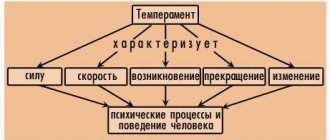Concept
Any business is connected with communication, with business connections. Interaction with people allows you to increase resources and make the organization more efficient. Therefore, the most important factor in the competitiveness and success of any entrepreneur is the ability to build communications in the field of operation, business communication skills and the ability to establish and maintain business connections. In any country, the presence of a developed system of business contacts for a businessman significantly increases his opportunities. After all, connections allow you to use not only your own resources, but also the “baggage” of partners and friends. The concept of business relationships includes relationships with people within the framework of professional or entrepreneurial activities. Established contacts greatly increase the capabilities of the enterprise, because partners bring with them their own set of connections, reputation, experience, knowledge, and various resources. Therefore, establishing connections is the most important task for managers and businessmen.
Individual relationships. Theory and practice of empathyAndrey Kurpatov
Organopsychic vector
The first vector of the open human system is, in a certain sense, an analogue of the mental organization of an animal, but it is a specifically human analogue. Regardless of external conditions (presence or absence of social relations, linguistic environment, specific work activity, etc., etc.), a person is born a human being
and it will be, but to a greater extent “humanity” is manifested in philology - and especially in ontogenesis at the expense of or in a system with two other subsystems - personal and epistemological. Upon closer examination, this first vector is physiological in nature, which is why this aspect of the psyche can be conditionally called “organopsyche”. And we can also say that this aspect of the psyche is a derivative of the psychophysiological structure of the human nervous system and its environment.
The meaningful relationship between the human organopsyche and the world is a relationship, relatively speaking, of an informational nature. Here we trace the stages of transformation by the organopsyche of that information from the external world that is received and transformed by it, undergoing peculiar level transitions
.
We proceed here from the fact that knowledge is, one way or another, an integral system of interaction between us and the world, and therefore, it is legitimate to talk about the cognitive center in us
and about everything else that is
“external”
relative to this
center of ours in us
. It is clear that in this case, we consider “external” not only what happens outside our body, but also in it, with it. That is, these are not only the events of the world around us that we observe, for example, a sunset or a car accident, but also what happens in our body, and even what happens in our very psyche - here are the manifestations of dyspepsia (stomach pain , heartburn, etc.), and the feelings we experience, the abstract analysis we are capable of, etc.
The level transition of this “external” information in the organopsyche is a step-by-step process
woven from its (organopsychic)
capabilities
and
tendencies
. The structure of this system seems to be staged in the sense that each of the processes has its place in the hierarchy, which is built according to the primacy, secondaryness, etc. (but not the significance) of these processes relative to each other. That is, information that enters into interaction with a person at each of these stages will give a specific holistic material result (for example, a feeling) of the relationship that has occurred, but in the future the path of this information through the organopsyche will continue (however, it would be more correct to say that from this moment it begins a new path - the path, in our example, of this specific sensation): it (already modified) enters into interaction with new (other) possibilities and tendencies of the organopsyche, which manifest themselves, bringing to light new stage processes.
Let us make a reservation right away that this process is one-directional, that is, information that has entered into a relationship with the human organopsyche, refracted in a series of staged mental processes, cannot be, like rewinding a film, returned to the world (external to our cognitive center) in its original form . And in the same way, if information has made a stage transition at the level of the organo-psychic processes themselves (for example, from affect to feeling), it cannot take a “step back”, again become what it was before this stage process (that is, other In other words, you can “get” a feeling from affect, but you cannot “get” affect from a feeling).
Now, briefly about these levels and stages, about this peculiar odyssey of an external impulse through mental space.
Everything that is given to us as a result of the relationship between our cognitive center and the world external to it (information) is given in sensation
.
In other words, everything that has become the object of our knowledge (in the broadest sense of the word) can enter us only through the gate of sensation. The sensation, which is the result of the interaction of the “knower” and the “external”, carries within itself both the properties of the actual perceived object and the features of perception due to the characteristics of the perceiving apparatus. This is the first stage of the organopsychic process
.
Interacting with sensation (“digestible”, “digestible” information for the “cognitive”), the organopsyche makes a certain primary assessment
this information, this is
the second stage organopsychic process
. The possibilities and tendencies of the organopsyche, revealed to us at this level, in the process of cognition can be embodied by us in the form of a certain scale, which is purely individual for each of us. According to the way in which the marks of the “quality” of the sensation are applied to it, the primary assessment of this particular sensation will also occur, which should be called the “valence” of the sensation or the primary (“+/-”) assessment.
Valence
(primary assessment) is the qualitative value that the individual organopsyche assigns to a sensation in accordance with the individual
valence scale
.
We do not need to learn to feel pain; if we encounter this sensation for the first time or any other time, we will immediately and unambiguously evaluate this sensation as negative. But if so, then what makes us talk about the individuality of this evaluative apparatus? Firstly, there is a difference in quantitative assessment (for example, one person will evaluate the same painful effect as “-1 point” of valence, and another as “-2 points”). Secondly, a qualitative difference in this assessment is also possible, because there are individuals who perceive one painful effect as attractive - with a “+” sign, and some other as negative - with a “-” sign. We can also say that valence is a kind of primary affect
, which, unlike emotion (see below), is passive in relation to the “external”.
It is here that, with the help of valence, the basis for the assessment of “I feel good” and “I feel bad” is laid - an assessment that is very primitive in comparison with the whole variety of possible human assessments, but very important. Depending on the light with which the sensation is colored, the entire subsequent action is determined. Either this assessment will create a peaceful state of passive (Izardian) joy, or grief, as a response to negative valence. The nature of all subsequent processes will be determined here (“whatever you call the boat, that’s how it will float”). This is how two fundamental “patterns” are born - “good” and “bad”; we can say that valence (primary affect) determines the direction, consolidates it and makes it obvious to the owner of these patterns, to “me”.
After the sensation has acquired its valence, the information contained in it again interacts with the individual’s organopsyche, and new possibilities and tendencies of the latter are realized. the image is created
- This is
the third stage organopsychic process
. The concept of “image,” however, is quite broad; here by “image” it is necessary to understand, first of all, the gestaltization carried out by perception as such. At the same time, an image is far from what we see, hear, touch, etc. An image is something that our psyche forms on the basis of its previous experience. Regardless of whether we feel, for example, the smell of an object we see or not, the organopsyche “completes” the “missing” smell in this image and is even able to say how strong it is. It will unfold the image visible on the plane in three-dimensional space and time, since the image for the psyche is reality, and the latter for it is the other side of the mode of existence (which includes time, space, modality and intensity). So, an image is not only a gestalt of an “objective” figure and an “objective” background, but also a “subjective” background, or even a “subjective” figure.
In fact, here, at this level of transformation of external information, consciousness arises, and we move on to the fourth stage organopsychic process
, to what is born at the junction of the image, as well as new (other, “next”) possibilities and tendencies of the organopsyche, to
a secondary
, one might say, more detailed
assessment
.
If during the valence (primary assessment) modality and intensity were manifested to a greater extent, here the assessment includes both a spatial relationship and a relationship of time (past, present and future). All this now organizes the assessment, which we called secondary. Defining and highlighting this stage allows us to understand why such seemingly very deep organopsychic processes as affects are experienced by people in situations where there is no real reason for them. The image of the perceived object already carries within itself a certain condensation of the entire content of the human mental sphere, and it is in this - associated - form that it is subject to a secondary assessment and actualizes the “emotion”. In this case, the actual external
, “third-party” reason is indeed not always necessary.
Emotions
- this is a phenomenon
of the fifth stage of the organopsychic process
, which is the reaction of “me” to “not-me”. Where “not-me” is a secondary evaluated image, deployed in space (its spatial relationship with “me”), time (combined with the past and deployed in ideas about the future), modality (all kinds of qualities and methods) and intensity (extremely dynamic inside images).
Only emotion, from among all the phenomena listed above, definitely gravitates “outside” and, therefore, is accessible to “reflection”, and it is reflection
- is the result of the refraction of emotion at the next level of organopsyche (
sixth stage organopsyche process
). After the appearance of reflection, the assessment turns out to be not just an “assessment for oneself” or an “assessment for evaluation”, as it actually was before, it becomes an “assessment for weighing”, “assessment for choice”, we are already more or less able to control the external manifestation emotions.
It is obvious that the content of reflection actualizes new possibilities and trends contained in the organopsyche. The interaction of the latter and reflection gives birth to a new meaning
, and as a process -
understanding
(
primary understanding
), this is
the seventh
(secondary in relation to emotion)
stage organopsychic process
. An “attitude to emotion” is born, that is, how we ourselves “evaluate” our experience in sensation. Here again all our experience is at work, which, in accordance with its imperatives, again modifies reality. It is clear that such expansion of the “knower”, carried out by him on the perceived “external”, leaves practically nothing from what was in the primary “information” and further in sensation.
Meaning (as an attitude to an emotion caused by a certain relationship with the “external”) in interaction with the capabilities and tendencies of the organopsyche (primarily with the conceptual apparatus) gives rise to a feeling
- This is
the eighth stage organopsychic process
. It is precisely because of this “high” position of feelings in the hierarchy of staged organopsychic processes that this term is so often used with the prefix “higher” feelings. Considering that they are formed by complex, unique interweaving of the components of the individual experience of each of us, as well as the individual conceptual structure of a person, we can talk about feelings endlessly, but never agree.
Specifics of business communication
Communication is a complex, multidimensional process within which relationships between business partners are built, business relationships are strengthened and formed, and business goals are achieved. Business communication has the following characteristics:
- Regularity. It is not for nothing that there are rules of business etiquette and norms of the communication code - they allow you to effectively communicate with different people in the business field. The norms of such communication have been formed over the years and are a proven tool for productive interaction with partners.
- High degree of responsibility of communication participants for the result. Any connections in business communication are established in order to promote and develop the business, so communication participants cannot risk the reputation and future of the enterprise.
- Formal-role organization of the communication process. Interaction in the business sphere is based on the official and status distribution of roles; communication participants must comply with the chain of command and the rules of business etiquette.
- Neutrality and formality of relations. Within the framework of such relationships, expression and personalization are unacceptable. Interactions and speech should maintain a distinctly formal tone. For example, even spouses working in the same company must maintain distance and use formal addresses.
Stages of business communication
Relationships in business are subject to fairly strict rules and regulations; they also apply to the sequence of actions during interaction. In general, the following stages are distinguished in business communication:
- Preparatory. At this stage, it is necessary to comprehend the goals of the contact, prepare the necessary documents, and think over an interaction strategy.
- Solving organizational issues. To work productively, you need to choose a place and time for the meeting, determine its format and rules.
- Meeting and establishing contact. At this stage, it is extremely important to follow the norms of business etiquette and set your partner in a positive mood.
- Discussion of problems. At this stage, each side expresses its position on the main issues.
- Discussion. Communication participants put forward arguments and counterarguments in defense of their position.
- Reaching agreements. At this stage, the search for an optimal solution to the problem occurs and a compromise is reached.
- Decision-making. The parties confirm their agreement with the solution found.
- Fixation of agreements. The compromise reached must be included in documents signed by all parties to the meeting.
- End of the meeting. At this stage it is also very important to follow the rules of business etiquette.
- Analysis of results and feedback. In business communication, the meeting does not end with goodbye; you still need to conduct a “debriefing” and draw the necessary conclusions. To maintain established connections, it is necessary to establish a communication mechanism.
Personality. Interpersonal relationships
Personality is a person, an individual as a bearer of some properties.
A number of researchers believe that personality is the result of the social development of an individual. The word “personality” is proposed to be used in relation to a person from a certain stage of his development. A newborn or even a two-year-old child is not recognized as a person.
In other sources, for example, in Christianity, each person is a full-fledged person immediately at the moment of his conception in the womb. This serves as a basis for banning abortion. In Buddhism and Hinduism, it is forbidden to kill any living beings, since they are potential individuals.
Personality implies a person’s ability to manifest his will in actions , “to be his own master.” The individual’s need to prove himself as a person is sometimes realized unconsciously in his propensity to take risks and other extraordinary actions. However, one can become a harmoniously developed person only if one develops a moral consciousness, the basis of which is selfless love for one’s neighbors.
The behavior of an individual as an individual significantly depends on relationships with the people around him. Such relationships with another person or group are called interpersonal relationships .
Official (formal, business) relationships develop between people in the process of work and study (for example, teacher - student, buyer - seller). They are built on the basis of officially approved rules and regulations (for example, on the basis of the Charter of an educational institution), in compliance with formalities.
Informal (personal) relationships are not regulated by law. They develop between people, regardless of the work performed and are not limited by established formal rules.
Personal relationships are based on certain feelings of people, their attitude towards another person.
Sympathy is the internal disposition, the attractiveness of a person.
Antipathy is internal dissatisfaction with a person, dissatisfaction with his behavior.
A person perceives another person primarily on the basis of external appearance, and then, adding up his impressions of his words, actions and character traits, he forms a general impression of him. Consequently, the basis for the perception of any personality is the relationship between a person’s character, behavior and appearance.
Psychologists note a common stereotype (pattern): “A beautiful person is a good person.” This must be taken into account when forming an opinion about a new acquaintance in order to avoid making a mistake.
Normal relationships between people develop when there is a desire and need to sympathize, empathize with other people, and put oneself in the position of another person.
The broadest form of interpersonal relationships is acquaintance .
Under certain conditions, acquaintance develops into closer interpersonal relationships - friendship . Friendship can be called positive interpersonal relationships based on mutual openness, complete trust, common interests, and constant readiness to help each other at any time.
Love is the highest spiritual feeling of a person, accompanied by the willingness to do everything possible for the well-being of another person.
Sigmund Freud in his works showed that such apparently different cases as the love of a mother for her son and a man for a woman have the same nature.
Leo Tolstoy warned that the feeling of love for loved ones often contains more selfishness - the desire to receive pleasure from communicating with a loved one, than true love, which consists of wishing the best for a loved one. This is where scenes of jealousy, etc. arise.
To get rid of jealousy, you need to treat your loved one not as your property, but as an independent free person who has the right to make her own decisions.
Determine what type of legal liability is being discussed in the listed cases: a) liability occurs only for the commission of a crime. Responsibility is implemented in the most severe form of state coercion - imprisonment; b) responsibility is expressed in such measures as reprimand, severe reprimand, dismissal, etc.; c) responsibility is expressed in imposing on the perpetrator the obligation to compensate for the property damage caused by him. Give examples of offenses that would result in the corresponding type of legal liability.
a) Criminal liability . Imprisonment is provided only for criminal offenses. For example, for distribution of narcotic substances, murder.
All elements of crimes are recorded in the Criminal Code of the Russian Federation, for example: murder (Article 105), intentional infliction of grievous bodily harm (Article 111), intentional infliction of moderate harm to health (Article 112), kidnapping (Article 126), rape (Article 131), violent acts of a sexual nature (Article 132), theft (Article 158), robbery (Article 161), robbery (Article 162), extortion (Article 163), etc.
Disciplinary measures are provided for violations of labor discipline , for example, for being late for work, absenteeism, violation of professional ethics (rudeness with clients).
Disciplinary liability occurs for committing a disciplinary offense, i.e. for violation of official duties, which are established by the Labor Code of the Russian Federation, internal labor regulations, job descriptions in force at enterprises and organizations, charters, etc. It consists of the imposition of disciplinary sanctions by the administration of the enterprise where the employee works, or by a higher authority.
c) Compensation for property damage involves civil liability , for example, for damage to someone else’s property or harm to health as a result of a traffic accident, damages resulting from failure to fulfill contractual obligations (sale of low-quality goods, delay in the delivery of goods or in the commissioning of a construction project into operation).
3. You have decided to improve your health and purchase everything you need for skiing. Having decided on the items to purchase, you have assessed your financial resources. All that remains is to choose the place and terms of purchase. There are several options to choose from: newspaper ads, local consumer market, large department store, specialty store. How to make an affordable and high-quality purchase of what you want? Propose your actions and justify your choice.
Each of the proposed options provides the opportunity to purchase a quality product, but with some features.
A large department store and a specialty store - in these places you can buy inventory with a guarantee of quality and quickly . In a specialized store there is more choice and, as a rule, sellers who are more knowledgeable about these products. Prices may depend on random factors, so it is better to visit both of these outlets and then make a choice.
The local consumer market and newspaper advertisements do not provide such a guarantee of quality (you may even encounter scammers and robbers), but they may offer a lower price and the opportunity to further reduce it during bidding. These two options will require more time to study the market and are suitable for people who are prone to communication, research, and adventurism. Here you can meet real ski fans and learn a lot of useful things from them, and it will just be interesting to communicate with such people.
The market is more for those who like to hang out in the crowd and at the same time look at other goods. Advertisements in the newspaper for those who prefer to travel around the city, getting acquainted with the offers. In both cases, you should definitely visit a specialized store first to be “in the know.”
Types of organization connections
Any enterprise interacts with external and internal audiences. On this basis, external and internal business relations of the organization are distinguished. But for the development of the company, the most interesting are still external relations with partners, potential investors, government officials, and consumers. Vertical and horizontal connections are also distinguished. The first includes interaction with high-ranking officials: representatives of authorities at various levels, with heads of larger organizations. The second means communication among equals: between managers of the same level, colleagues of structural divisions of the same level. There are also formal and informal connections, both direct and indirect.
Blog
I invite you to the seminar on 07/24/16. in Riga.
Topic: Personal relationships
Time: from 12.00 to 17.00
Address: Kr. Valdemara, 36. Riga
Participation fee: 25 euros. Relationships are important! We all came here to resolve relationships on different levels. We incarnated in a time of relationship. Man is a social . He builds relationships with people and phenomena.
Usually there are patterns of relationships that are inherited from soul experiences and from the blood line, from the parental family and existing standards in society.
Oh, and I really want personal happiness!
The biggest request a modern person has is a request for personal relationships.
Here it is worth determining for yourself what kind of relationship is expected. They lived happily ever after and died on the same day? Or a life with many adventurous relationships, daggers of breakups and passions?
The seminar is suitable for those who are looking for a relationship and for those who are already in a relationship.
The presenter of the seminar is Tatyana Fomicheva. Experience of happy family life as a couple for 43 years. Therefore, there is something to share.
Seminar plan
- relationships are always an exchange of energies, how it happens and at what level, where the rake and gifts lie;
- ways to balance energies, control flows;
- features of relationships in current energies;
- when to treat and when to end a relationship;
- love languages and relationship ages;
- development of a relationship;
- third relational power;
- about love magic
- happiness to be and about everyday life;
- meditation and practice with crystals and the Sound of Crystal Bowls.
Payment details are on the right side of the website. Tea break included. Participation via Skype is possible.
If you have anyone in need of this information, please share . The more happy people there are, the more beautiful the world is. Let's create an environment of happiness together. Thank you.
Addition!!! I am writing after the seminar. The recording of the seminar is ready.
The seminar “Personal Relationships” is ready. It contains three videos of my experience and energetic vision, three practices and the Sound of Crystal Bowls.
Leave a comment for those following! Thank you
©Tatyana Fomicheva
It will also be useful
Responses to initiatives.
Calendar 5.10 – 11.10. 2020 Main trends and challenges of the week I hope that you have achieved a flexible perception Last week was about this. And this week we will have our...
Numerology and stones. October 2020
Welcome to October! What does he bring to us and what are his numerological tendencies? What pebbles will support the middle month of autumn? ...
Stability and flexibility. Calendar 28.09 – 4.10.2020
Main trends and challenges of the week The week will demonstrate our Resilience and flexibility for personal expediency and meaning. Last week was important with its themes. Oh yes, the energies of the week may be inviting us...
Expediency and meaning. Calendar 21.09 – 27.09. 2020
Main trends and challenges of the week From time to time, Life tests us for expediency and meaning . Everyone has their own time for this, but around the dates of the Equinoxes this happens more actively and en masse...
Share with love! Thank you
- 1
Share
Types of business communication
There are several classifications of business communications. Traditionally they are divided into direct and indirect. The first type of communication occurs directly face to face, and the second - through intermediaries, including the use of technical means and documents. Communication and business connections are also divided into formal and informal. In the first case, communication is subject to strict rules of business etiquette, and in the second, it is more free and friendly. There is also a practice of dividing communication into verbal and non-verbal.
Personal relationships
Film "Leadership and Management: Collaboration for the Cause"
The manager resolves the issue in the format of personal relationships. The role of the leader is played by N.I. Kozlov.
Personal relationships are relationships where people see each other as living people, and not just production functions.
... The cell door swung open. Siegfried stood on the threshold.
- Don't sit! - he shouted. - Walk in circles!
And before slamming the door, he quietly dropped a tiny note on the floor. Stirlitz picked it up. “If you don’t say that my dad hilled and trimmed your roses, I promise to beat you half-heartedly so that you can hold on longer. Please eat the note."
Relationships develop between people. And what a person will not do just like that or for someone, he will do personally for an important person. For such a special relationship. Robert Cialdini calls this the law of reciprocity (the law of gratitude).
Accordingly, the practitioner is always faced with three interrelated tasks: the formation of relationships - determining what roles we play in relation to each other and, accordingly, in what relationships,
- I suggest we switch to you!
exploitation of relationships , pedaling their existence,
- Listen, as an old friend, as an exception...
pumping up the relationship resource : restoring the required level and strengthening existing relationships for their subsequent successful exploitation.
- I am so grateful to you! I know a very decent bar, there is a proposal to celebrate this in a pleasant atmosphere...
In this case, relationships are also a carrot or a stick, but not substantive, but emotional, background, something on the side of the main course. When the possibility of getting some relationships or losing expensive relationships is formulated directly and openly, along with salaries and vouchers, they cease to be living relationships, become formal and turn out to be an object: an object of trade.
Relationships are always on the side of the main course. Money, dinner, sex - in a sense, these are also relationships, respect for us, care for us, love for us, but when they become an object of trade, they turn out to be objectified relationships and go into the category of an ordinary carrot or stick: “The bucket is not took it out - there will be no sexual intercourse!” — I quote A.P. Egides.
Watch: Workshop: “Three Kittens”
Relationship resource, or the “law of the pie”
If you can get someone interested, it’s better to get them interested, but if it’s clear that it’s unlikely to get someone interested, but the job must be done, then business people consider options for reasonable pressure. And this is a special policy...
You can put pressure by pedaling the existing RELATIONSHIPS: they love you, they fear you, and this can be used in a variety of ways. Options:
- Listen, last time I helped you out, do you remember...
- While we are your parents and take care of you, you should...
- Do you love me?
- I said!!
All this works, but the PIE LAW also works at the same time:
When we invest in relationships, the relationship pie grows. Relationships are strengthened. When we use relationships, the pie gets thinner. If we take too many bites of the pie, we run the risk of one day finding that the pie is no longer there. The credit of the relationship has already been exhausted.
- I can’t help you.
– There is no need to teach me, I already earn money myself.
- Leave me alone?
- And who are you?!
Every time you put pressure on a relationship, you are slowly destroying the relationship.
Hence the constructive: if you have eaten enough of the pie, do not forget to make up for what you spent later. It is difficult to indicate the exact ratio, offhand it is 9 to 1: in order for the relationship to remain at the level, it is necessary to make up for every one minute of demands, showdowns and other forms of pressure with nine minutes of friendship, attention and sincere care.
So, you can put pressure when you do not forget about strengthening relationships, about being always necessary, pleasant and interesting.
Requests, demands and suggestions
In fact, it is from these details: the carrot, the stick and the game of relationships that the motivational basis for the following types of appeals is built: requests, entreaties, demands and offers.
- Sentence: I show that you are interested.
Gingerbread is used, there is no relationship game.
- Request: I show my interest (“I need this”), plus I connect through an attitude (at least the most abstract: “After all, we are people, right?”).
The result is a delicious gingerbread: if you help me, you will be cool and wonderful. Want?
- A Plea, or a Very Request: I show my difficult problem (bottom dog) plus I connect through the attitude: “You are so kind, nice and noble. Surely you won’t abandon us at such a difficult moment?”
And this is a whip, pressure. But - hidden.
- Demand, or civilized formulation of a threat: do it so that things don’t get bad (so that there are no problems).
Carefully, but the whip is already cracking. And no one hides this...
The main rule to remember is: It’s okay to start with a request and continue with a demand.
But you can’t put pressure after an offer.
They respond to proposals when there is faith that they are not fooling or luring into a trap. If, after you refuse the gingerbread, they try to force it into your mouth: “Eat it, you bastard!” - then you understand that you were deceived, that the smile at you and the seemingly concern for you was a lie! And then you begin to perceive such a person as an enemy. That’s why you can’t put pressure after an offer.
And if you know that you will achieve what is necessary no matter what, then you can start with a soft request, with an open demand, but you don’t have to start with a proposal.
- If you forget, you will run into trouble. And it can be expensive. Therefore, it is better to imagine situations where this may be relevant, and think in advance about what and how can be done there, and what will be a mistake.
Formal and informal connections
In the business sphere, communications are classified according to the degree of formalization. Formal connections are established between people within groups created on the basis of certain documents. And informal connections are those that arise regardless of whether there are any documents to support them. Thus, a business or friendly connection can arise between the heads of partner organizations. And formal relations are established between the heads of branches, or, for example, between rectors of universities. But formal connections do not exclude the emergence of informal ones; they can coexist perfectly.
Business communication tools
The most important tool of communication is human language. Within business relations, a formal business style of speech is used for interaction. It is distinguished by normalization, regulation, neutral tone of presentation, logic, brevity and unambiguity. There is also a set of non-verbal means that largely accompany business or friendly relationships. Mutual relationships are maintained through facial expressions, gestures, body position in space, visual contact, etc. Another tool for business communications is documents. In them, information is recorded on a tangible medium and allows you to legally secure relationships and agreements.
Effective business relationships
The consistency of internal interaction between staff and the creation of a professional external image of the entire organization as a whole depend on well-built business relationships.
For business relationships to be effective, they must be built taking into account the basic working rules:
- maintaining the priority of the organization's goals over the goals of individual employees;
- stimulating employee interest in work activities and improving professionalism;
- a combination of normatively prescribed actions and self-organization of personnel;
- ensuring psychological compatibility in organizational personnel placement;
- when rationing labor and establishing the scope of duties of workers, compliance with their level of professional training, psychological and physical capabilities.
The main priorities of effective relationships include honesty and reliability.
These options best serve to strengthen established professional connections.
Features of establishing business relationships
Communication in business takes place on mutually beneficial terms. Unlike friendships, establishing business connections always involves deriving some benefit from this communication. But this state of affairs is not perceived negatively as self-interest. Entrepreneurs understand that their communication can become an additional resource for their companies and therefore consciously enter into such relationships. To establish business connections, special events are organized, for example, industry exhibitions, conferences, forums, award ceremonies, etc. People who can be useful to each other are invited to these events. Businessmen and managers specially attend such events with the hope of finding new partners; such communication is called networking, i.e. activity to establish connections. A feature of the process of establishing business connections for a company is its duration and continuity; entrepreneurs have been developing connections for years, carefully protecting and maintaining them.
Business Ethics
Business communication at any level: between employees, between subordinates and managers, between partner organizations - must comply with certain norms and rules. Their totality represents the ethics of business relations.
Recently, in conditions of increased competition between commercial organizations, much attention has been paid to the quality of communication. It becomes a “calling card”, a trademark of the company and promotes respectful attitude and the establishment of effective business relationships.
Generally accepted ethical principles include:
- respect for participants in a common cause;
- the honor and reputation of the company is more important than profit;
- decent competition;
- justification of trust;
- refraining from illegal and illegal means of achieving goals;
- compliance with applicable laws and submission to legitimate authorities;
- opposition to corruption and crime;
- showing tolerance towards representatives of other countries, cultures and traditions;
- conducting business in accordance with available funds and resources;
- performing one's duties not for personal gain, but to achieve common goals.
Compliance with the general ethical principles of the organization should not contradict the ethics of internal relationships.
Areas of forming connections in business
But, in addition to special events, entrepreneurs use every opportunity to expand the company’s business connections. The main areas in which you can expand your circle of useful acquaintances are:
- Circle of colleagues. Each person has their own social circles and this can be used to make new friends.
- Partners. Each organization has its own circle of connections and you can also make it your own.
- Place of study. It’s not for nothing that management experts say that building a career should begin while still studying. It is known that many classmates willingly support each other in conducting business.
- Rest, leisure. It is no secret that many connections are made in an informal setting: in sanatoriums, fitness clubs, hobby clubs, resorts, everywhere you can find useful people who will subsequently help develop your business.
Business Relationships: 5 Principles
What is a business relationship? And how do they differ from personal ones? The most important difference is that in business relationships the result is important, not the process.
What result? Each system is different. Conclusion of an agreement, increase in sales volume. Conducting a certain number of lessons, negotiations, meetings with clients. Writing a certain number of articles. And all this within a given time frame.
Do you know why the client is always right, and if the client is wrong, then you need to look at point one? Because he has the ability to satisfy your money needs. If you satisfy him.
A successful business relationship allows each participant to meet their needs. There is no result - the relationship ends. Is it true?
“Love me like this, love me like this, love me like I am...”
In a business relationship, you will not be loved for who you are. If you are as you are, you are not meeting the objectives of this business relationship. A good person is not a profession. Are you not releasing the product? “Relate” in a club of interests where the process is important. And the other side of the coin. When you know exactly what your goals are, it's easier for you to find the right people. It's easier to weed out unnecessary ones. It becomes clear why you need to know the principles of building successful business relationships. And what personal qualities do you need to develop? Here we will talk about principles.
The first principle: mutual sympathy.
Simple, human. You must like the person. And you, accordingly, are a person too. With modern opportunities for choice, no one will mock themselves by doing business with an unpleasant person.
The second principle: you must be respected as a professional.
This principle assumes that you have mastered the basics of the profession and are constantly improving your level. You stay up to date with the latest trends, options and opportunities that make it faster, easier and more enjoyable to achieve results. This point contains a very important point that characterizes you as a professional. This is accessibility. During reasonable business hours, of course. When you are available and quickly resolve business issues, you are considered a reliable and responsible partner. And the client feels safe and under reliable protection.
The third principle: you are an interesting person, and not just a highly qualified specialist.
People can talk to you about books, movies, yoga, etc. You have hobbies and a life outside of work. And you are ready to share your interest. There are no dollars in your eyes when communicating with a client.
The fourth principle: give a little more than is expected of you.
Attention, interest, care. Each area has its own specifics, what to give more.
Fifth principle: consistency and reliability.
This is more of an ethical issue. Sometimes people with whom you do business have temporary difficulties. And they cannot buy your services as much as they did before. The truth is that difficulties pass, but your change in attitude, coldness and “not calling back” are remembered forever. Maintain your service at a normal, high level and you won’t have to look for new clients, partners and buyers.
Resources for forming long-term business connections
In order to build effective business communication, it is necessary to use certain resources. These include the personal qualities of an entrepreneur: sociability, politeness, friendliness. All this facilitates the process of establishing and maintaining business connections. These resources also include initiative, the ability to establish contacts, curiosity, and openness. Also, resources for establishing connections are the ability to conduct a conversation, a broad outlook, and a willingness to help.
Reputation and business connections
Well-established relationships in the business sphere are an indicator of the success of a businessman. But there is also a direct correlation between business connections and the reputation of the entrepreneur and the organization he represents. A person with a positive image, known as a professional in his field, will more easily find partners and acquaintances. Therefore, a businessman must not only strive to expand his social circle as much as possible, but also carefully protect his reputation by not getting involved with dubious individuals who could damage the image of the entrepreneur. A good reputation allows you to make acquaintances with respectable, influential people. Reputation also helps to attract the attention of government officials, investors, and promising partners. Therefore, in pursuit of new connections, an entrepreneur should not forget about his image and the reputation of the company.











